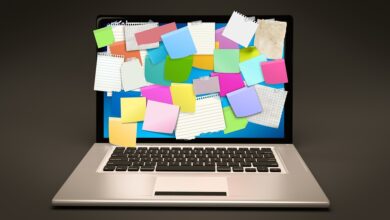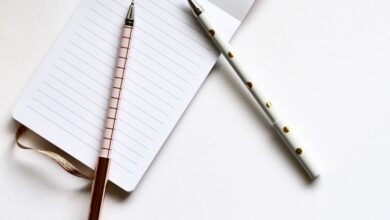
Get More Done in Less Time with a Planner
In today’s fast-paced world, time management has become a crucial skill for success, both in personal and professional realms. A planner can be a powerful tool in this endeavour, enabling individuals to prioritise commitments, manage tasks efficiently, and reduce stress. This article explores how a planner can help you optimise your day, improve productivity, and achieve your goals—all while maintaining a sense of balance.
Understanding the Importance of Planning
At its core, planning is about envisioning your goals and determining the steps necessary to achieve them. A planner acts as a tangible representation of this process, allowing you to track your duties, responsibilities, and deadlines. The act of writing down tasks not only solidifies their importance but can also reduce the cognitive load of having to remember them. This reduction in mental clutter often results in greater clarity and focus.
The Psychological Benefits of Using a Planner
-
Reduction in Anxiety: A well-structured planner can alleviate the stress associated with juggling multiple commitments. Knowing that you have laid out a plan can instil a sense of control, thereby reducing feelings of anxiety and overwhelm.
-
Enhanced Focus: A planner allows you to break tasks into smaller, manageable steps. This segmentation can improve concentration, as you can focus on completing one task at a time rather than feeling daunted by larger, more complex projects.
-
Achievement Motivation: Checking tasks off your list can provide a sense of accomplishment, spurring you on to tackle subsequent tasks. This positive reinforcement can drive a cycle of productivity, as crossing items off can enhance your motivation and commitment to your goals.
Choosing the Right Planner
Not all planners are created equal. When selecting a planner, consider your personal preferences and unique needs. Here are a few types of planners to contemplate:
1. Daily Planners:
These allow for a more granular approach to your schedule, as they provide space to plan each hour of your day. Daily planners can be particularly useful for those with tightly packed schedules or who thrive on structure.
2. Weekly Planners:
These planners give you a broader overview of your week, enabling you to see your commitments at a glance. This format can be beneficial for those who prefer flexibility and find themselves juggling multiple tasks across several days.
3. Monthly Planners:
Useful for long-term goal setting, monthly planners allow you to map out important dates and deadlines. They assist in tracking projects that span weeks or months and can provide a big-picture perspective.
4. Bullet Journals:
If you like creativity and customisation, a bullet journal may be for you. It combines elements of a planner, diary, and personal organisation system, allowing you to create layouts that resonate with your personal style.
Consider trialling a few types of planners and selecting one that aligns with how you work best. It’s essential that your planner feels functional and inspiring.
Tips for Maximising Your Planner’s Effectiveness
Merely possessing a planner won’t magically make you more productive; you have to use it effectively. Here are some strategies to ensure you’re getting the most out of your planner:
1. Set Clear Goals:
Begin by defining what you want to achieve, both short-term and long-term. Clear goals provide direction and purpose in your planning. Use the SMART criteria—Specific, Measurable, Achievable, Relevant, Time-bound—to structure your goals effectively.
2. Prioritise Your Tasks:
Not all tasks hold the same weight. Use techniques such as the Eisenhower Matrix—classifying tasks based on urgency and importance—to identify what should be tackled first. This prioritisation helps in allocating your time more effectively, ensuring that the most critical tasks are completed when your energy is highest.
3. Establish a Routine:
Consider incorporating a regular time for planning into your weekly routine. For instance, spending Sunday evening reviewing the week ahead can help you mentally prepare. Establishing this habit creates a sense of predictability and control, allowing you to approach the week with confidence.
4. Review and Reflect:
Build in time to review your progress periodically. Reflecting on what you have accomplished can boost morale and inform your planning process. Are there tasks consistently left unchecked? If so, understand why and adjust your expectations accordingly.
5. Include Downtime:
Your planner should not only reflect work commitments but should also allocate time for relaxation, hobbies, and self-care. Burnout is a real risk when productivity becomes the sole focus. Ensuring that you integrate time for rest and leisure can not only improve your wellbeing but also enhance your overall productivity.
Leveraging Technology with Traditional Planners
While traditional paper planners are popular, digital planners have gained traction for their convenience and versatility. Applications and tools like Trello, Asana, and Notion allow for advanced features such as reminders, collaborative tasks, and even integrations that can streamline your workflow. Depending on your needs, a hybrid approach could be beneficial—using a physical planner for daily tasks and a digital tool for project management.
Integrating Other Productivity Techniques
Many successful individuals combine planners with other productivity techniques to enhance their efficiency. For instance:
-
The Pomodoro Technique: Break work periods into chunks, typically 25 minutes long, with short breaks in between. Noting these intervals in your planner can keep you accountable.
-
Time Blocking: Allocate specific blocks of time in your planner for focused work on particular tasks. This helps in limiting distractions and ensuring that multiple duties are attended to without overlap.
-
Mind Mapping: For those engaging in creative projects or brainstorming, consider mind mapping your ideas on a separate sheet that can accompany your planner. This visual representation can assist in clarifying thoughts and generating new ideas.
Adapting Your Planner to Changing Circumstances
Life is unpredictable, and priorities can shift. A good planner is flexible and adaptable. If unexpected events occur, rather than feeling overwhelmed, adjust your planner accordingly. Reassess your goals and find ways to reallocate your time to be realistic about what you can achieve.
The Role of Accountability
Sharing your plans and goals with someone you trust can add another layer of motivation. Consider finding an accountability partner, whether a colleague, friend, or family member, to provide encouragement and support as you work through your objectives. Regular check-ins can help nurture commitment and support your progress.
Conclusion
Using a planner is more than simply jotting down tasks; it’s about creating a visual representation of your intentions and guiding you toward your goals. The benefits of increased productivity, reduced stress, and enhanced focus are undeniable. By selecting the right planner and implementing effective planning techniques, you can transform your approach to time management, achieving more in less time while maintaining the balance necessary for a fulfilling life.
Ultimately, adopting a planning system that resonates with you allows you to take control of your time rather than letting your time control you. Dive in, discover your unique rhythm, and reap the rewards that effective planning can bring.





